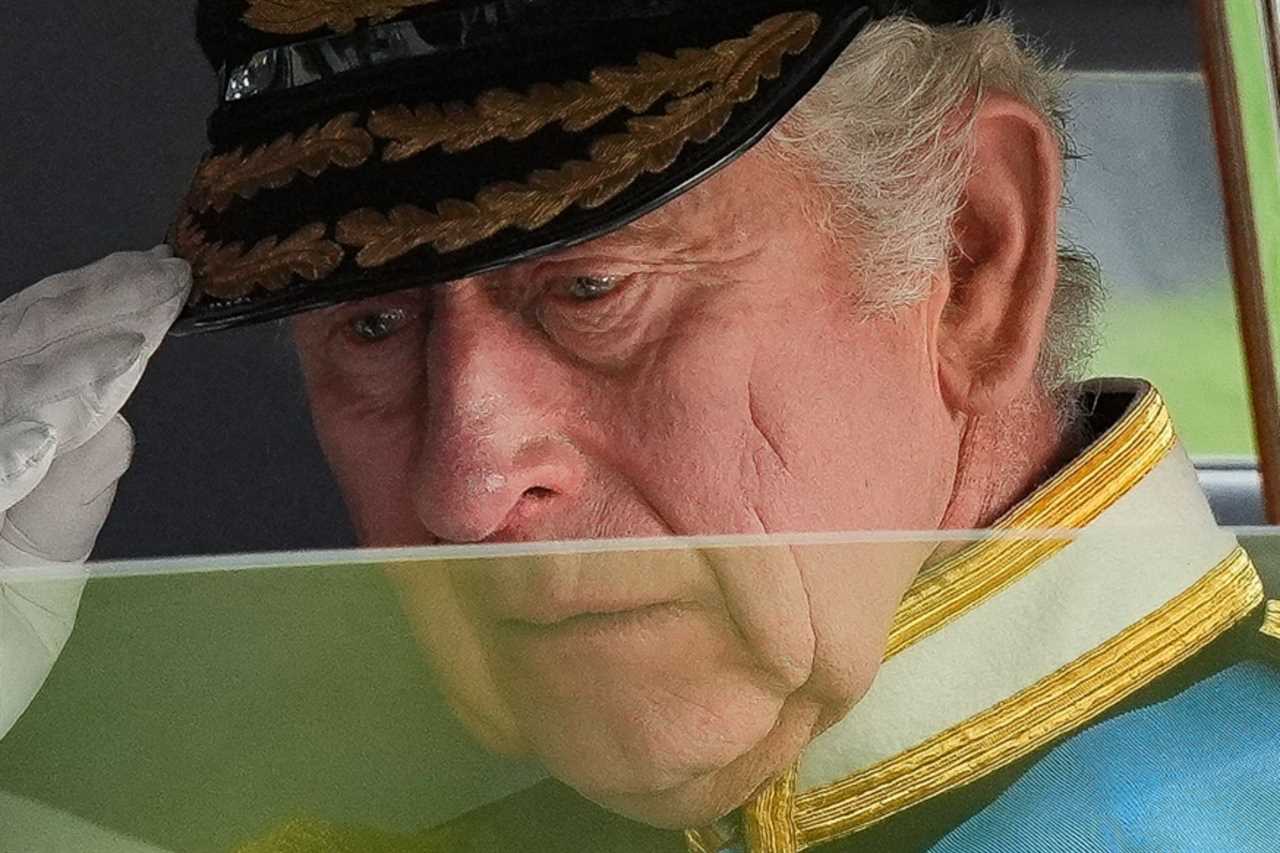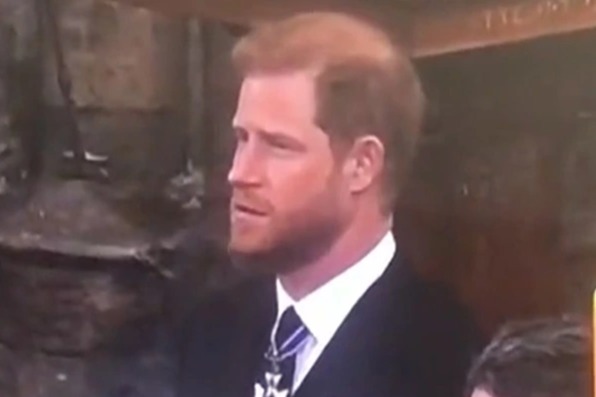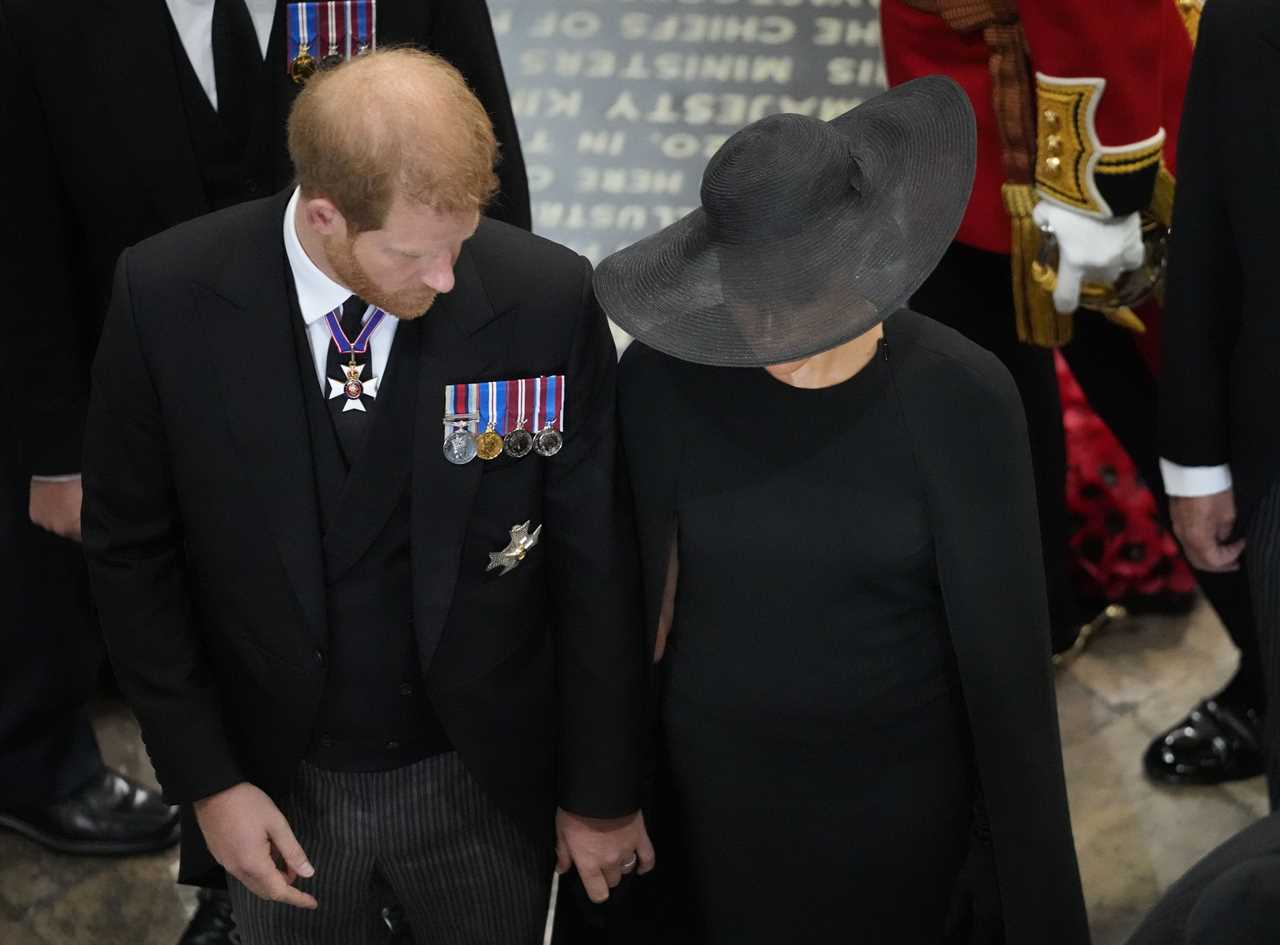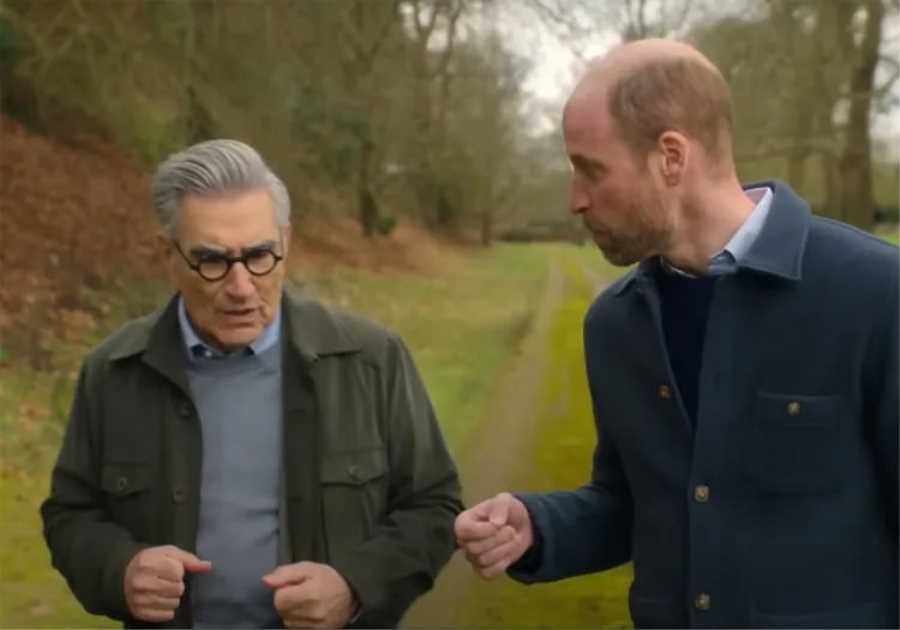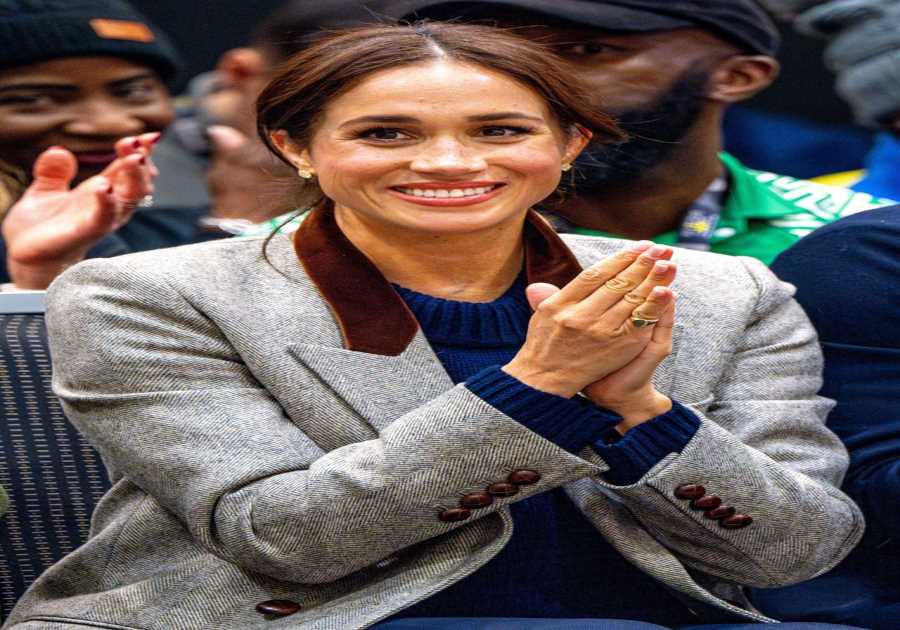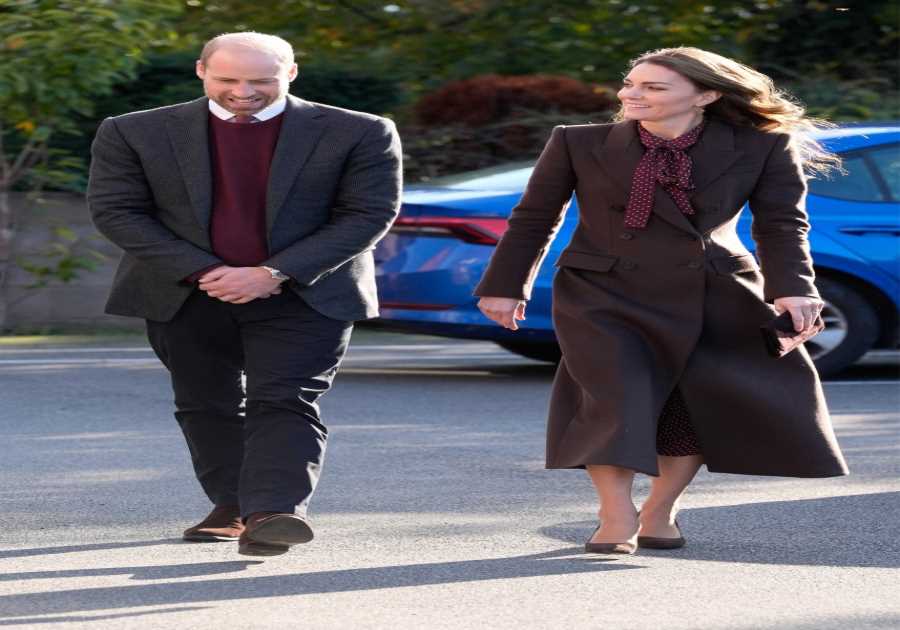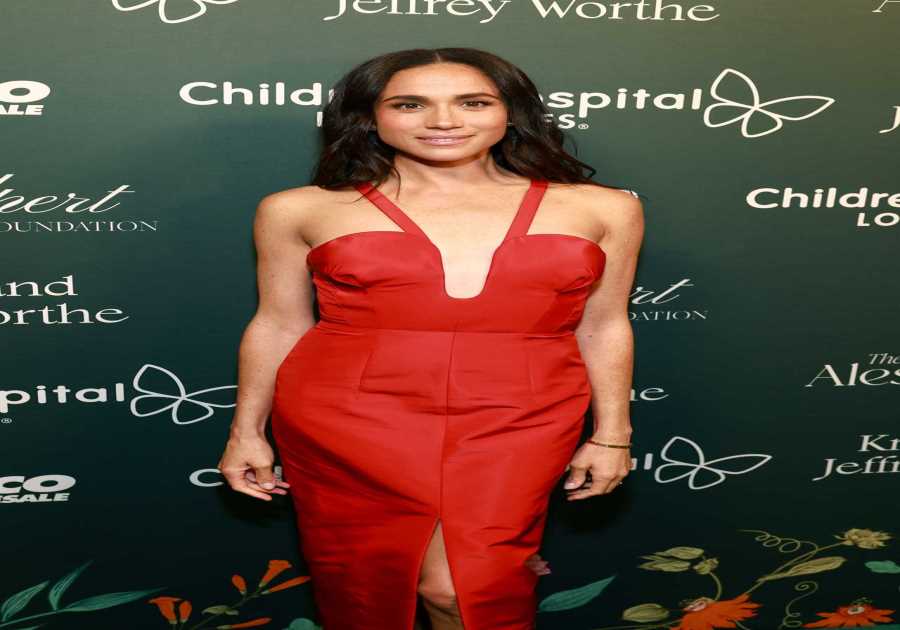QUEEN Elizabeth will be buried alongside Prince Philip at Windsor Castle.
In her final resting place will be a wreath of flowers with a poignant connection to her husband.
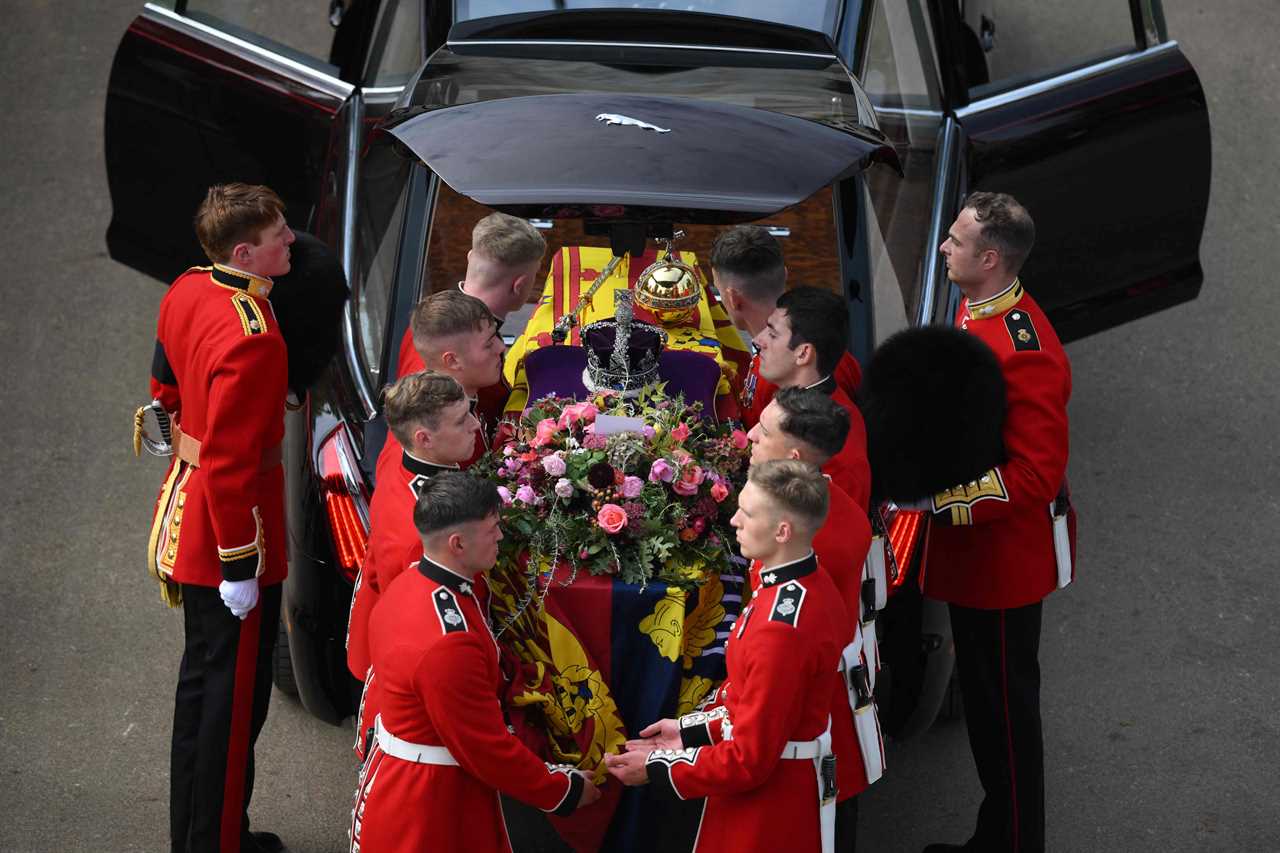
The Bearer Party transfer the coffin of Queen Elizabeth II, draped in the Royal Standard, into the State Hearse at Wellington Arch in London
The wreath that was draped over the late monarch’s coffin included a sprig of flowers from her wedding to Philip with their marriage lasting more than 73 years.
It was made to be completely sustainable, on the request of the King and will be buried with her at Windsor.
The flowers and foliage were chosen especially for their symbolism with cuts taken from the gardens of Buckingham Palace, Clarence House and Highgrove House.
It includes rosemary, for remembrance, and myrtle cut from a plant which was grown from a sprig of myrtle in the Queen’s wedding bouquet.
Myrtle is an ancient symbol of a happy marriage.
English oak has also been included to to symbolise the strength of love, pelargoniums, garden roses, autumnal hydrangea, sedum, dahlias and scabious.
The Royal Standard is reflected in shades of gold, pink and a dark burgundy.
Following the emotional state funeral at Westminster Abbey, the casket was taken from Westminster Abbey to Wellington Arch, where it was transferred to a hearse to begin its journey to Windsor.
There the Queen was to be laid to rest alongside her husband of 73 years, Prince Philip.
Elizabeth died on September 8 at Balmoral Castle, her summer home in the Scottish Highlands, and while her health had been declining she carried on her duties.
She was photographed just two days before she died, looking frail but smiling and holding a walking stick as she appointed Liz Truss as her 15th and final prime minister.
Such was her longevity and her inextricable link with Britain that even her own family found her passing a shock.
“We all thought she was invincible,” Prince William told well-wishers.
The 40th sovereign in a line that traces its lineage back to 1066, Elizabeth came to the throne in 1952 and became Britain’s first post-imperial monarch.
She oversaw her nation trying to carve out a new place in the world, and she was instrumental in the emergence of the Commonwealth of Nations, now a grouping comprising 56 countries.
When she succeeded her father George VI, Winston Churchill was her first prime minister and Joseph Stalin led the Soviet Union.
She met major figures from politics to entertainment and sport including Nelson Mandela, Pope John Paul II, the Beatles, Marilyn Monroe, Pele and Roger Federer.
Queen Elizabeth II was a towering global figure, praised in death from Paris and Washington to Moscow and Beijing.
MOURNING AROUND THE WORLD
National mourning was observed in Brazil, Jordan and Cuba, countries with which she had little direct link.
A hearse drove the coffin to Windsor Castle, west of London, for a service at St. George’s Chapel.
This will conclude with the crown, orb and sceptre – symbols of the monarch’s power and governance – being removed from the coffin and placed on the altar.
The Lord Chamberlain, the most senior official in the royal household, will break his ‘Wand of Office’, signifying the end of his service to the sovereign, and place it on the casket.
It will then be lowered into the royal vault.
ROYAL TRIBUTE
Princess Charlotte pays sweet tribute to the Queen with jewellery
Later in the evening, in a private family service, the coffin of Elizabeth and her husband of more than seven decades, Prince Philip, who died last year aged 99, will be buried together at the King George VI Memorial Chapel, where her parents and sister, Princess Margaret, also rest.
“We’re so happy you’re back with Grandpa. Goodbye dear grannie, it has been the honour of our lives to have been your granddaughters and we’re so very proud of you,” grandchildren Princesses Beatrice and Eugenie said.
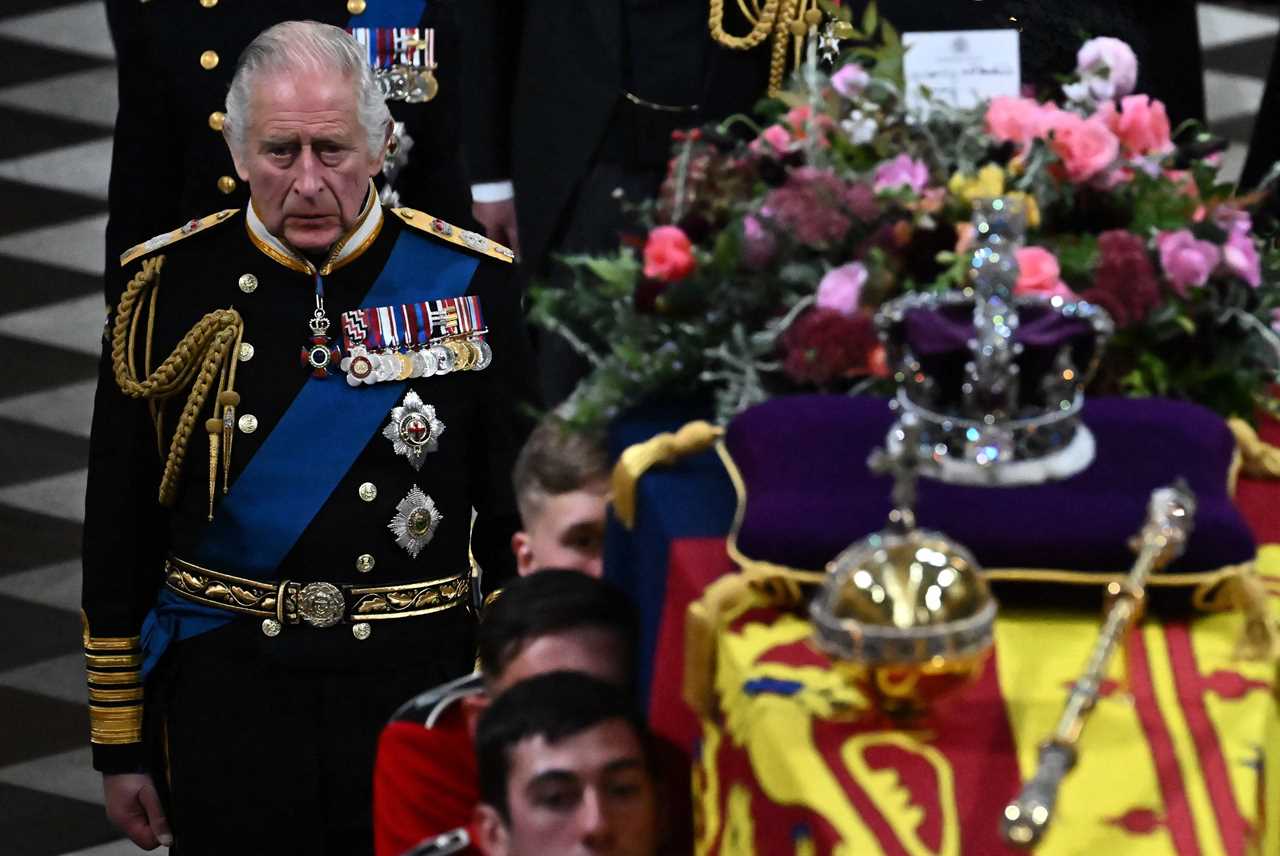
King Charles walks behind his mother’s coffin at Westminster Abbey for the state funeral

